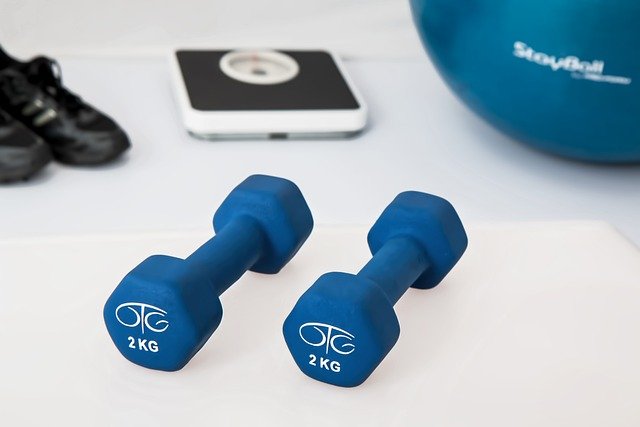Transform Your Home into a Fitness Hub: The Ultimate Guide to Home Gyms
Creating a home gym is an excellent way to prioritize your fitness without the need for expensive gym memberships or time-consuming commutes. This comprehensive guide will explore everything you need to know about setting up and maximizing your home gym, from essential equipment to space-saving solutions and effective workout routines.

Additionally, a home gym offers privacy, which can be especially appealing for those who feel self-conscious exercising in public spaces. You have complete control over your environment, from the music you play to the cleanliness of the equipment. Moreover, investing in a home gym can be cost-effective in the long run, eliminating monthly gym membership fees and potentially saving you money over time.
What essential fitness equipment should I include in my home gym?
When setting up your home gym, start with versatile equipment that allows for a variety of exercises. Dumbbells are a crucial component, offering a wide range of strength training options for different muscle groups. Consider purchasing a set with various weights or adjustable dumbbells to accommodate different exercises and progressive overload.
A stability ball is another versatile piece of equipment that can enhance core workouts, improve balance, and add challenge to bodyweight exercises. Resistance bands are excellent for both strength training and flexibility work, and they take up minimal space.
For cardio, consider a jump rope, which provides an intense workout in a small area. If space and budget allow, a treadmill, stationary bike, or rowing machine can be valuable additions for more varied cardio options.
How can I maximize space in my home gym?
Space efficiency is often a key consideration when setting up a home gym. Wall-mounted equipment, such as pull-up bars or resistance band anchor points, can help utilize vertical space effectively. Foldable or collapsible equipment, like adjustable weight benches or portable step platforms, can be easily stored when not in use.
Multi-functional equipment, such as a power tower that combines a pull-up bar, dip station, and push-up handles, can provide a full-body workout without taking up much floor space. Storage solutions like wall-mounted racks for dumbbells or resistance bands can keep your gym organized and clutter-free.
What types of workouts can I do with home gym equipment?
With the right equipment, you can perform a wide variety of workouts in your home gym. Strength training exercises using dumbbells or resistance bands can target all major muscle groups, including chest presses, shoulder presses, bicep curls, squats, and lunges.
For cardiovascular fitness, high-intensity interval training (HIIT) workouts can be easily adapted to home gym settings. Jumping rope, burpees, mountain climbers, and squat jumps are excellent exercises that require minimal equipment but provide maximum cardiovascular benefits.
Core workouts using a stability ball or simply your body weight can help strengthen your abdominal muscles and improve overall stability. Planks, Russian twists, and stability ball crunches are effective core exercises that can be done at home.
How can I stay motivated with my home gym workouts?
Maintaining motivation can be challenging when working out at home, but there are several strategies to keep yourself engaged. Setting clear, achievable goals and tracking your progress can provide a sense of accomplishment and drive. Using fitness apps or online workout programs can offer structure and variety to your routines.
Creating a dedicated workout space that’s inviting and energizing can also boost motivation. Consider adding mirrors to check your form, a sound system for motivating music, or even a TV for following along with workout videos.
Joining online fitness communities or virtual workout groups can provide accountability and social support, mimicking the community aspect of a traditional gym. Regularly changing your workout routine and trying new exercises can also help prevent boredom and keep you excited about your fitness journey.
What are some popular home gym setups and their estimated costs?
When considering a home gym setup, it’s essential to understand the potential costs involved. Here’s a comparison of different home gym configurations to suit various budgets and space requirements:
| Setup Type | Equipment Included | Estimated Cost Range |
|---|---|---|
| Basic | Dumbbells, resistance bands, stability ball, yoga mat | $200 - $500 |
| Intermediate | Basic setup + adjustable bench, kettlebells, pull-up bar | $500 - $1,500 |
| Advanced | Intermediate setup + power rack, barbell set, cardio machine | $2,000 - $5,000 |
| Premium | Advanced setup + smart home gym system, high-end cardio equipment | $5,000 - $10,000+ |
Prices, rates, or cost estimates mentioned in this article are based on the latest available information but may change over time. Independent research is advised before making financial decisions.
Creating a home gym is a personal journey that depends on your fitness goals, available space, and budget. Whether you start with a basic setup or invest in a comprehensive home gym, the key is to choose equipment that aligns with your workout preferences and helps you maintain a consistent fitness routine. With the right setup and mindset, your home gym can become a powerful tool in achieving your health and fitness objectives.






